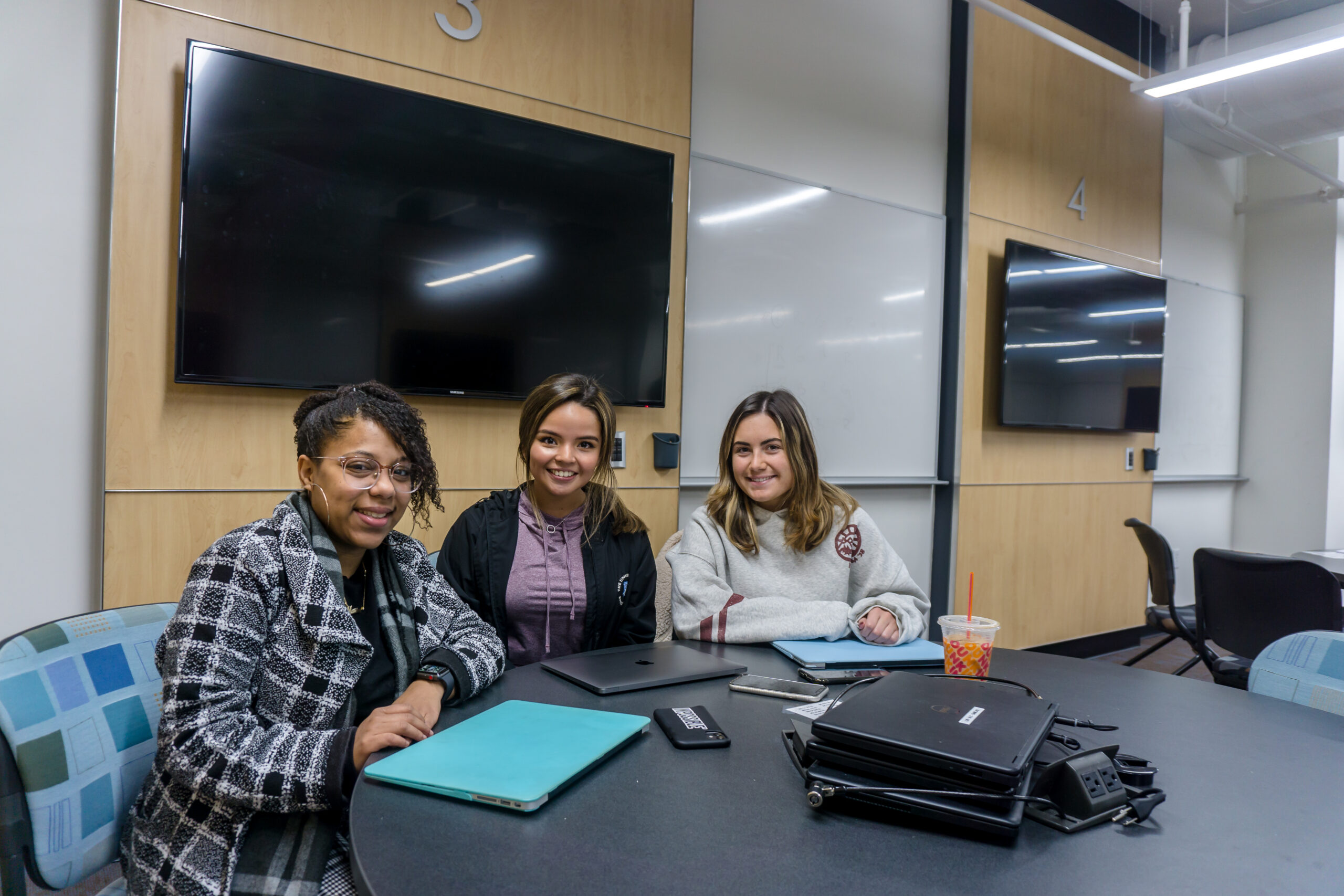URI’s Active Learning Classrooms are providing students with a more interactive academic experience. Photo by Autumn Walter.
Professors at the University of Rhode Island are beginning to see the positive effects of active learning classrooms (ALCs), which promote collaborative work, technological engagement and increased mobility for students.
These classrooms are typically filled with small, round tables of six to eight students. Often, the tables are fitted with laptops or other technological equipment to help with in-class assignments. Some professors at URI are passionate about being able to teach in a more conducive way for student learning.
Professor Shanna Pearson teaches one of her larger classes in an ALC. Pearson is very happy with the outcomes her students gain from the setting, as well as the benefit she sees from a professor’s perspective.
According to Pearson, in most classes she has found that the same group of students are the ones she is constantly engaging with. However, with the ALCs, she has found that more students willingly engage and discuss the topic at hand, helping improve their learning ability.
“Some people are quieter, some people don’t like talking in such a large classroom, and so I still do that back and forth with students when I’m giving a presentation, but the the small groups where really, the tables allowed me to do much more,” Pearson said. “So that that allows everybody, even those who are less willing to speak in public, to really get to be a participant in that kind of thinking through issues talking about them with others.”
Pearson also has discovered that the topics she teaches in an ALC are better suited for the learning environment, such as when she teaches problem-solving activities that would not be appropriate for a lecture hall.
“This may take creativity in when we’re working on developing students critical thinking and logic skills, and analysis skills in particular because you have to practice, you can’t just present ‘here’s the analysis that you do’ and then not have them do it,” Pearson said.
Pearson, who now teaches in an ALC, previously taught her classes in a stadium setting where it was difficult to move around and form groups. She said that this was very difficult for her due to the fact that she is a naturally active professor.
Through the ALCs, she has found that students are more willing to participate, whereas before they begrudgingly participated in forming groups and discussing as well as students appearing to grasp the concepts of what they have been learning at a faster pace.
Professor Ashlea Rundlett also teaches classes in an ALC and has seen positive benefits from her experience.
Rundlett said that the technology available and the ability to share information with students and have students share information back, are the two driving forces of having an ALC that works for her.
The setup of the classroom leads these discussions and sharing of information, through the use of the screens along the walls of her classroom as well as the tables which are able to be moved around, according to Rundlett.
“It really facilitates group interactions and the students are able to work individually or in groups to actually apply what they learned in the lecture and I think it seems to me that students have a better grasp of the concepts of one state, you know, have a more hands on experience,” Rundlett said.





